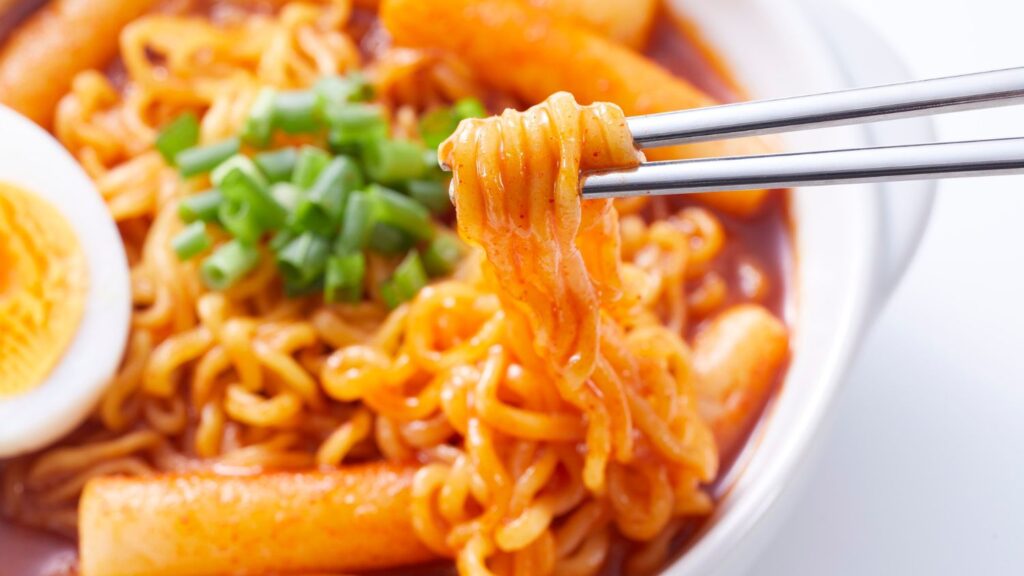Exploring Swavory & Swicy – A Flavor Fusion Revolution
We’re all familiar with classic taste combinations like the crave-able sweet and salty or the sugary pucker of sweet and sour, but what about swavory and swicy?
If you’ve been paying attention at all over the last couple of years, you’d know that “swicy” (sweet + spicy) has been taking social media by storm.
Like many things that take off online, the question is whether it translates IRL (in real life), and in this case, the answer is a resounding “Yes!”.

As of Q4 2024, nearly 10% of US restaurants had a “swicy” option on their menu, up 1.8% over the previous 12-month period. That number is projected to climb another 9.6% over the next
four years, nearly doubling its current market share.
With 84% of consumers eating spicy food and 53% of Gen Z shoppers stating that they enjoy “swicy” flavor profiles, it’s not hard to see why this trend has caught on as much as it has.
However, it’s not the only taste pairing that is making consumers’ collective mouths water.
Enter, umami sweet. Better known as “swavory” (sweet + savory).
Swavory: The Rise of Umami Sweet Flavor Fusion
The complexity and versatility of umami, the relatively recently discovered “fifth basic taste” is now the subject of much experimentation, exploration, and efforts at mastery by chefs and companies in the broader Western world.

According to Ajinomoto, there have been efforts in the West to destigmatize the use of MSG, the ingredient most commonly associated with the taste of umami. Whether correlated or causative, the improving favorability of MSG coincides with increased global interest in umami, with 34% of Canadian consumers finding savory flavors most appealing and 33% of US consumers claiming to eat more savory foods.
The meaty, savory, brothy notes of the umami taste sensation can add depth and richness to savory dishes. However, from high-end pastry chefs to boutique bakeries and increasingly R&D benches, the potential of umami-sweet flavor pairings is redefining indulgence.
While some of these applications and ingredient combinations may be novel, this desire to combine sweet tastes with umami is nothing new. In fact, we’ve been enjoying these pairings for years with classics such as swavory fruit/honey and cheese, swicy BBQ sauces and glazes, and a wide range of spice blends.
Still, Dr. Lourdes Mato, Associate Principal Scientist – Applied Research at Edlong, believes the best way to understand how to unlock the power of the umami sweet combination is to look to the culinary traditions of countries that have already perfected it, “East Asian cultures from Japan to Korea and more have really mastered the art of umami. But what makes the cuisine so impactful is that it is not just one note; it isn’t only umami. It’s about how savory, sweet, salty, and acidic flavors dance together and complement each other so well in different sauces and dishes. It’s understanding how they work together and play off each other that is key to unlocking delicious and balanced flavors.”
Whether it’s teriyaki, bulgogi, or your favorite stir-fry, the popularity of incorporating Asian-inspired flavors and ingredients like soy sauce, miso, and more is helping swavory jump front and center for consumers.
Yet, Asian cuisine isn’t only responsible for helping boost the demand for umami sweet flavor profiles, but it has also been a major catalyst behind the rise of the swicy craze.
Swicy: The Tastes Behind the Trend
The popularity of Korean fried chicken, Sweet Thai Chili sauces, and numerous Chinese take-out dishes, among others, has helped the combination of sweet and spicy flavors grab the attention of consumers’ taste buds for years.

For many, this has been a gateway to further exploring swicy offerings.
More recently, Latin American cuisines, particularly Mexican, have been doing their part in promoting the trend as well.
Especially with the rising popularity of condiments like Chamoy and Tajin, primarily due to social media trends of using them on fruit for a refreshing sweet treat with some extra heat.
The influence of Latin American swicy foods has inspired the release of tropical-spiced summer beverages, chipotle honey chicken, and more from major chains across the US.
Then, of course, there is hot honey, the sticky, spicy, sweet swavory condiment that skyrocketed swicy to the top of the food trend charts.
In a relatively short amount of time, it has gone from the perfect drizzle on a slice of pepperoni pizza to major collaborations with fried chicken and taco fast food chains, ranch dressing offerings, and, yes, even lip balm.
Julie Drainville, Edlong’s Director – Global Sensory & Innovation, says that when developing swicy profiles, it’s important to note that unlike umami and sweet, which are basic tastes with specific receptors on the tongue, spicy is not. “While the distinction may not matter in the mind of consumers, from a sensory and scientific perspective, the heat and spicy sensations that give swavory swicy products that kick, isn’t a taste, but rather what is known as chemical feeling factors.”
Where tastes and flavor rely on the tongue and olfactory receptors, chemical feeling factors (also known as trigeminal sensations) like the heat of capsaicin, the sinus-clearing burn of wasabi, the cooling of menthol, or even the prickly effervescence of carbonated beverages rely on the trigeminal nerve and the somatosensory system for perception.
Drainville adds that it’s consumers’ growing desire for novel tastes, like swavory and swicy, with sensory experiences that are driving the success of these combinations.

“More than ever, people want to expand their culinary horizons. Whether it’s through contrasting taste sensations, complimentary flavors, or a combination of both, they’re actively seeking out ways to experience new cultures through food or interesting spins on things they already enjoy.”
She continues, “Striking the right balance of umami sweet or sweet and spicy, creates so many opportunities for innovative and satisfying products.”
Opportunities for Swavory Swicy Innovation
It’s not an overstatement to say that these flavor fusions offer nearly limitless possibilities.
From spice blends to sauces, crispy snacks and decadent desserts, swavory and swicy profiles can add intrigue to an unending array of products.
One way to take advantage of these trends is to pair the savoriness of umami or the spicy heat of chilies with sweet brown flavors.
Profiles like miso caramel, miso brown butter, chili chocolate, hot honey, or chai spice are perfect for adding intrigue and elevating desserts and bakery items.
Maple, brown sugar and even candied praline can pair well with umami-packed ingredients like soy or spices for BBQ rubs, sauces, or even snack seasonings for that perfect touch of umami sweet or sweet heat.
In the end, whether swavory or swicy, these delicious pairings have the power to help define and inspire modern food trends for years to come.
Topics: Cultured flavors
Resource Type: Article